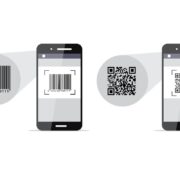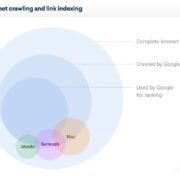Liz Centoni, Chief Strategy Officer and GM, Applications at Cisco, dares to make five predictions about which innovations will change corporate reality shortly and what opportunities and challenges will result.
As Chief Strategy Officer and GM, Applications, Cisco, Liz Centoni works with the executive leadership team, other general managers, and functional leaders to drive the company’s overall strategic direction and leads a team that develops new solutions to address new markets and create business for Cisco. As GM of Applications, Liz Centoni is responsible for Cisco’s portfolio of solutions that enable optimized experiences for our customers’ applications, which are increasingly critical to their business in today’s digital, cloud-based world. Here are her thoughts on five future trends:
Innovations that emerge under challenging times often result in the most significant leaps. Digital transformation and technology adoption has continued to accelerate over the past two years, transforming how people work and live. From the explosion in app usage and the adoption of telemedicine to enabling hybrid working and the ongoing evolution of the Metaverse, many new innovations currently being researched or in development will help expand these new possibilities.
As the pace of innovation accelerates, so does the need to act sustainably and inclusively. From solutions that use less energy and provide always-on connections to breaking down prejudices to securing data and devices, here are five predictions for emerging technologies and how they will impact the next few years of innovation and experience.
Data deluge, data gravity, and the need for instant insights will drive the edge to a whole new application development paradigm
Modern businesses are defined by the applications they build and use. The pandemic has shown us that companies can sustain and grow their business by focusing on apps or, in some cases, even going all-apps. Indeed, the app is becoming the frontier of the enterprise, and business interactions through apps are generating an ever-increasing data deluge. Every aspect of every interaction people have with enterprise apps will generate additional data to provide instant insights. Data will likely flow to a central data store for processing and storage, but pre-processing some of that data at the enterprise edge will prove more cost-effective. As a consequence,
Ethical, responsible, and explainable AI—from conception to deployment—will become the top priority for organizations and governments worldwide if we genuinely care about an inclusive future.
The extreme amounts of generated data are already beyond human scale, but they still need to be processed “intelligently” and, in some cases, near real-time. This is where machine learning (ML) and AI come into play. If instant insights are the future, ML and AI will help us gain those insights. The challenge is that when using data to generate insights, questions of ownership, sovereignty, privacy, and compliance must be taken into account. And when the AI used to create immediate insights has inherent biases, those insights are inherently flawed.
Hence the need for ethical, responsible, and explainable AI. The AI must be transparent, so everyone using the system understands how the insights came about. This transparency must be given in all aspects of the AI lifecycle – in conception, development, and deployment. Clarity, inclusive design, and diverse teams must create a future state that better represents all people.
At Cisco, we know that artificial intelligence (AI) can be used to create an inclusive future for all.
We also recognize that we have a responsibility to mitigate potential harm by using this technology. We have developed a Responsible AI Framework based on the six principles of transparency, fairness, accountability, privacy, security, and reliability. We translate these principles into controls applied in the creation of models and the selection of training data, respecting the processes of “security by design,” “privacy by design,” and “human rights by design” throughout the life cycle of the model and its Application in products, services, and company processes are guaranteed.
The future of innovation and business is application-driven, and all modern applications will be built with a trusted, observable, and API-centric mindset.
As previously mentioned, the company’s frontier is defined by its applications. Suppose we can achieve a future where enterprise data can be ingested, observed, and intelligently correlated in a way that respects all the constraints placed on it, including ownership, sovereignty, privacy, and compliance. In that case, we’ll be better placed to address the Using data in a way that will help develop innovative solutions. Aside from extracting contextual insights from the data, teams will be able to automate many complex operations better, ultimately helping to reduce friction in future business processes. To reach this future state,
Only by delivering a predictive and seamless Internet – from xG/Wifi-6 to satellite and beyond – will the Metaverse come to fruition.
There is no doubt that the trend towards untethered connectivity and communication will continue. The sheer convenience of using devices wirelessly is evident to everyone, whether nomadic or mobile. However, this also means that activities must not come to a standstill if the wireless connection is lost. The future needs reliable, always-on wireless connections at low prices. A seamless Internet future requires heterogeneity of access – i.e., seamless connectivity between each cellular (3G/4G/5G/xG) and WiFi generation (5/6/7) and the LEO satellite systems mega-constellation that are currently being used. Another powerful capability that AI can enable is predicting which wireless connections should be used,
Quantum networking, communications, and security will enable a faster and more secure future that will require reinventing the internet with even lower latency and higher bandwidth.
The coming era of quantum connectivity, communication, and security will differ from classic communication networks that transfer bits and bytes to provide voice and data information. Quantum networking is based on an inexplicable quantum physics phenomenon – the entanglement between particles, which allows them to share states.
In the case of quantum networking, this phenomenon can be used to share or transfer information. Merging several smaller quantum computers into one gigantic quantum computer is enticing. Quantum networking could enable a new secure connection between digital devices, making them impenetrable to hackers.
If this kind of foolproof security can be achieved with quantum networks, it could better protect against fraud in transactions. In addition, this higher quality of connectivity could also protect voice and data communications from interference and eavesdropping. All of these possibilities will reshape the internet we use today.























Comments